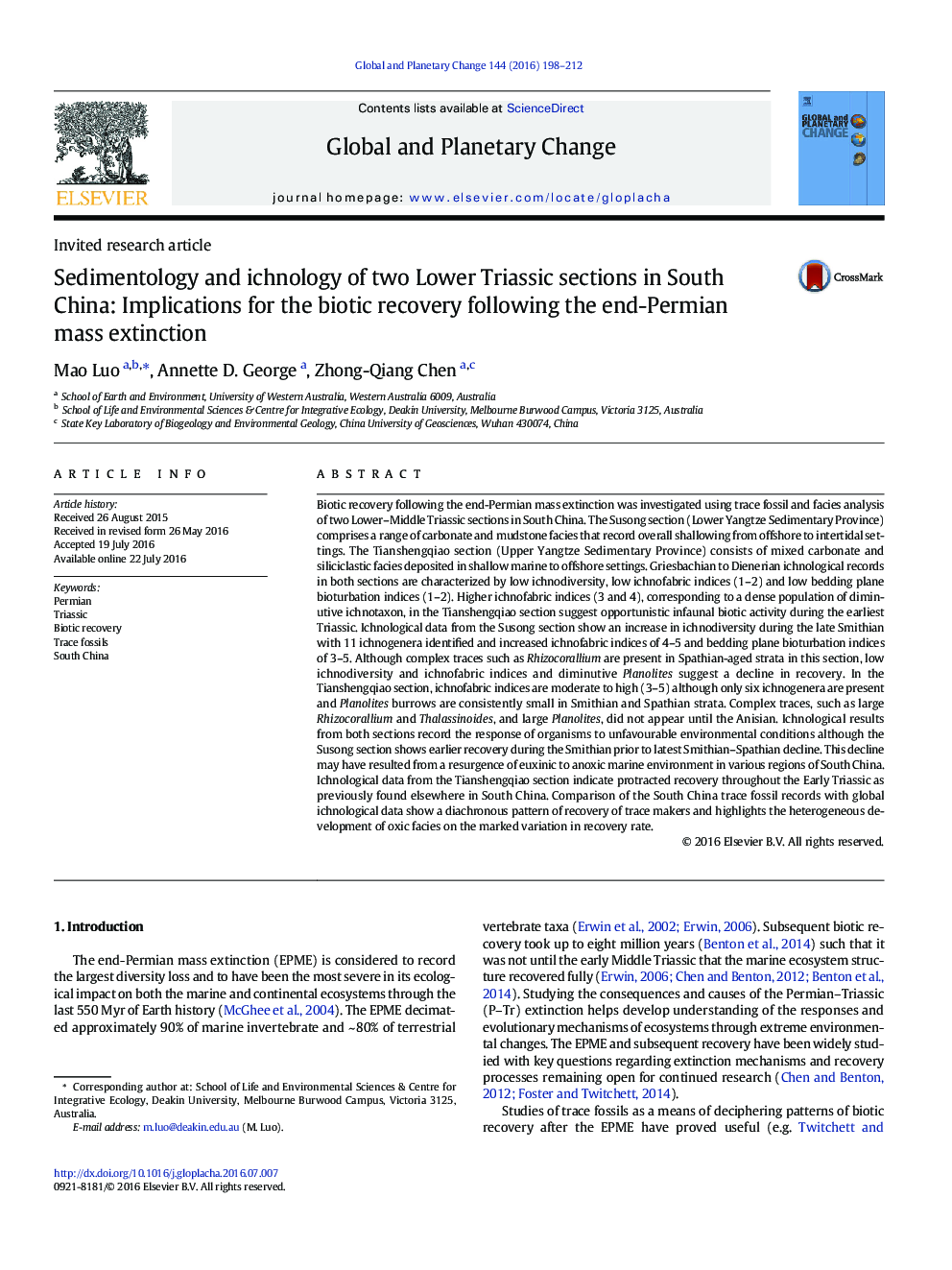| کد مقاله | کد نشریه | سال انتشار | مقاله انگلیسی | نسخه تمام متن |
|---|---|---|---|---|
| 4463280 | 1621638 | 2016 | 15 صفحه PDF | دانلود رایگان |
• Ichnological studies through two Lower Triassic sections from South China
• Different recovery history of trace makers in two sections
• Opportunistic behavior of trace makers in otherwise stressed environmental conditions in Early Triassic
• Heterogeneous development of oxic facies on the remarked variation of recovery rate among trace making organisms
Biotic recovery following the end-Permian mass extinction was investigated using trace fossil and facies analysis of two Lower–Middle Triassic sections in South China. The Susong section (Lower Yangtze Sedimentary Province) comprises a range of carbonate and mudstone facies that record overall shallowing from offshore to intertidal settings. The Tianshengqiao section (Upper Yangtze Sedimentary Province) consists of mixed carbonate and siliciclastic facies deposited in shallow marine to offshore settings. Griesbachian to Dienerian ichnological records in both sections are characterized by low ichnodiversity, low ichnofabric indices (1–2) and low bedding plane bioturbation indices (1–2). Higher ichnofabric indices (3 and 4), corresponding to a dense population of diminutive ichnotaxon, in the Tianshengqiao section suggest opportunistic infaunal biotic activity during the earliest Triassic. Ichnological data from the Susong section show an increase in ichnodiversity during the late Smithian with 11 ichnogenera identified and increased ichnofabric indices of 4–5 and bedding plane bioturbation indices of 3–5. Although complex traces such as Rhizocorallium are present in Spathian-aged strata in this section, low ichnodiversity and ichnofabric indices and diminutive Planolites suggest a decline in recovery. In the Tianshengqiao section, ichnofabric indices are moderate to high (3–5) although only six ichnogenera are present and Planolites burrows are consistently small in Smithian and Spathian strata. Complex traces, such as large Rhizocorallium and Thalassinoides, and large Planolites, did not appear until the Anisian. Ichnological results from both sections record the response of organisms to unfavourable environmental conditions although the Susong section shows earlier recovery during the Smithian prior to latest Smithian–Spathian decline. This decline may have resulted from a resurgence of euxinic to anoxic marine environment in various regions of South China. Ichnological data from the Tianshengqiao section indicate protracted recovery throughout the Early Triassic as previously found elsewhere in South China. Comparison of the South China trace fossil records with global ichnological data show a diachronous pattern of recovery of trace makers and highlights the heterogeneous development of oxic facies on the marked variation in recovery rate.
Journal: Global and Planetary Change - Volume 144, September 2016, Pages 198–212
